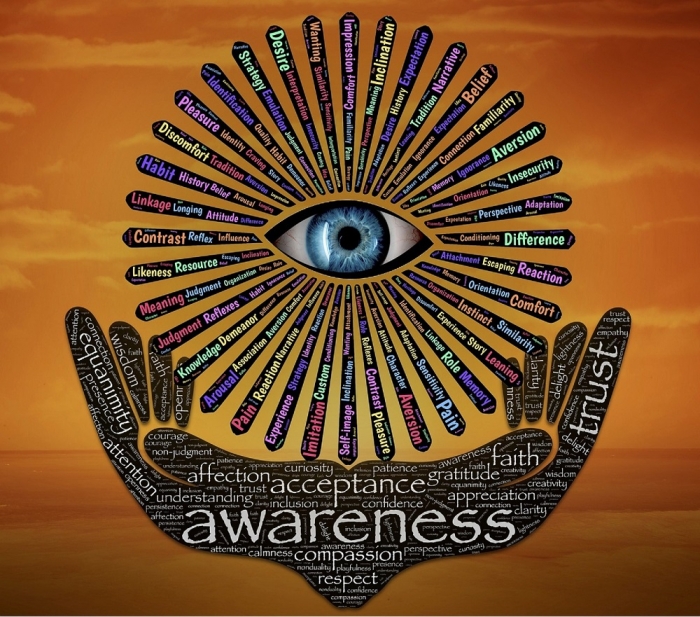There cannot be a stressful crisis next week. My schedule is already…

How Mindfulness Replaces Stress – Every Time! (Pt. 2 of 2)
1.
How Mindfulness Replaces Stress – Every Time! (Pt. 2 of 2)
My key to dealing with stress is simple:
Just stay cool and stay focused.
Ashton Eaton
How can you develop mindfulness to replace stress in any situation?
As the young, retired athlete, Ashton Eaton, reveals in the quote above, “just stay cool and stay focused.” Sure, easier said than done. He certainly employed exceptional skills for staying focused when he broke the world decathlon and heptathlon records.
Mr. Eaton is right: It’s easier to say cool when we are focused.
However, with all the distraction in life and in our multi-functional minds, staying focused all the time is a challenge. Mindfulness addresses this challenge directly.
You can develop mindfulness like this:
First, you become familiar with and begin adopting the essential mindsets.
In the first part of our series on mindfulness, we discovered four essential mindsets you develop to make mindfulness effective in your life. You become aware of your thoughts and emotions in the present moment. You turn within to check up on your inner being, In so doing, you become a calm observer and you are able to control and conduct yourself as a more relaxed participant of the world.
Then you develop and practice very practical situational techniques to apply in the presence of stressors.
Today’s post will use three advanced yet practical techniques to demonstrate how mindfulness replaces stress.
At first, it may be challenging to adopt this way of experiencing your life. Nevertheless, as you continue to nurture yourself this way. As you do, the practice becomes a habit and a rewarding way of life. You feel grounded and centered in all situations.
Mindfulness Replaces Stress – On Demand
We could liken Mindfulness to a very sharp sword that can slice stressful situations in half.

To conquer stress with this mental sword, you must first be willing to wield it.
If you’re ready to vanquish stress through mindfulness,
here are the additional steps that will help refine and
apply your practice.
#1 Suspend Your Judgments
In our world, society constantly requires us to choose, decide and judge things. Every day we pass judgments, big and small, on anyone or anything that comes our way – in the office, at lunch, in traffic, at home, and just about everywhere.
One problem with passing judgment all the time is that you expend too much mental energy on even the smallest inconveniences of life. All this insignificant judging leaves can leave you feeling exhausted and burnt out, even if you are just sitting in your office.
Mindfulness, on the other hand, replaces this stress because it requires you to adopt a mindset of acceptance. It is the way it is; you just let it go.

How does the mindset of acceptance work?
You avoid viewing things as positive or negative. Instead, you simply accept what is happening at the moment. If you do this, you are in a better frame of mind to mold your action or response to suit your present needs.
As you practice suspending judgment, you will be able to view things much more objectively. Soon you will realize that many of the stressors that have been “bugging” you are actually insubstantial and unworthy of your time, effort or energy. If the stressor is more serious, your nonjudgmental perspective will enable you to proceed with poise and clarity of mind.
As foggy thinking caused by stress begins to lift, your mind becomes as clear as the sky — a wonderful feeling. This is mindfulness replacing stress.
#2 Avoid Spontaneous Reactions
Along with the routine activities of life, the human brain creates routine patterns of thought and behavior. These activate automatically to respond to the occasion at hand.
Predetermined patterns, as you may already know, are not always useful or productive. You could call them “reactive elements” of the mind because they surface without conscious thinking.
Spontaneous reactions that respond to impulse can easily give stress the upper hand in our lives. If you continue to let stress rule, you will become unhappy and less productive in the long term. Mindfulness moves stress out of the way. So, your responses are clear-minded and levelheaded.
The way to combat subconscious “knee-jerk” reactive elements is to cultivate the mindfulness element of conscious thinking.
How does conscious thinking occur?
The two major parts of the human mind for our discussion are the conscious mind and the subconscious mind.
The conscious mind protects the subconscious from intrusions, such as potentially harmful ideas.

The conscious mind also receives instructions from the subconscious mind. This is why constant self-awareness, on the conscious level, helps to keep you calm, composed, and even-tempered.
Conscious thinking requires you to shift the power of thought to the conscious mind, so you can exert more control over what takes place in your subconscious.
On the one hand, conscious thinking enables you to devise solutions to remedy problems. On the other hand, your subconscious mind can also drive and direct your conscious mind. Mindfulness, or self-awareness, facilitates this operation so it is never on mindless autopilot.
#3 Be More Compassionate
Being compassionate means having sympathy, even pity, for the misfortunes of others.
Compassion is an antidote to negativity. It serves as a buffer against stress. If we feel for others, the spontaneous judgments and knee-jerk reactions will fade. A quieter and more peaceful mind, on the conscious and subconscious levels, will direct our feelings and actions.
Thus, being mindful to experience and extend compassion to others is a de-stressor.
Immersing yourself in compassionate thought and action naturally breaks down the hard shell of pessimism that many people develop as a way of dealing with stressors.
If your view of reality is a series of bad situations and misfortunes, a dose of compassionate behavior will reverse your pessimism. This element of mindfulness replaces the stress of negativity.
A person who chooses to be compassionate at all times is more likely to find inner peace and happiness than one who makes a conscious choice to be critical of other people’s words and actions.
The Takeaway:
While Part 1 of this Mindfulness series guided you through your inward self-awareness and hyper-focus, the advanced steps in Part 2 centered on your attitude and behavior toward the outside world.
Apply these smart techniques and you’ll likely be the coolest, calmest, and clearest thinker around. It does take practice to remember to center yourself inwardly so you can best respond outwardly. However, when you do this, mindfulness replaces stress and the rewards are self-motivating.
Make it a practice to be mindful and you will be
inwardly and outwardly
the picture of poise, self-confidence, and peace.
What Do You Think?
Know thyself . . . Socrates
Is mindfulness a key to knowing yourself better?
Let us know below in the Comment box!
10 Stress Habits and Alternatives!
If not, click here




I must thank you for the efforts you have put in writing this site. I am hoping to view the same high-grade blog posts by you later on as well. In truth, your creative writing abilities has motivated me to get my own blog now 😉